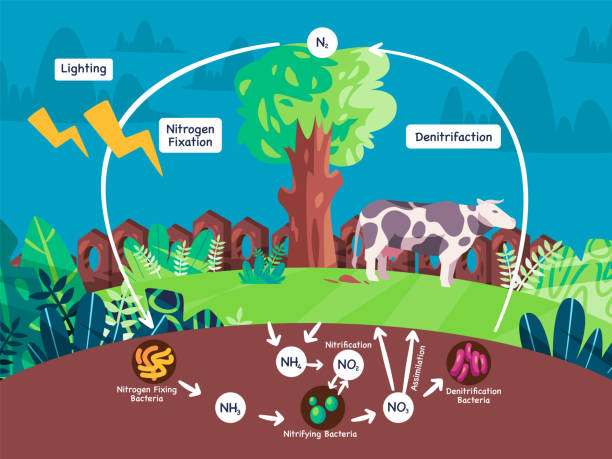Nitrogen is a vital element for all living organisms, playing a crucial role in their survival and growth. Interestingly, our atmosphere is composed of about 78% nitrogen. This large amount of nitrogen is in a continuous cycle, being used by living beings and then returned to the atmosphere. This continuous exchange of nitrogen between the earth, water, air, and living beings is known as the nitrogen cycle. But have you ever wondered how the amount of nitrogen in the atmosphere remains constant?
Understanding the Nitrogen Cycle: An Overview
To fully grasp the nitrogen cycle, it is essential to understand how nitrogen is extracted from the atmosphere and how it is returned. The cycle ensures that the nitrogen levels in the atmosphere remain stable, despite the ongoing processes that use and release nitrogen.
How Lightning Affects Nitrogen in the Atmosphere
One way nitrogen is lost from the atmosphere is during thunderstorms. The sudden lightning strikes cause some nitrogen in the air to combine with oxygen, forming nitrogen oxides. These oxides dissolve in raindrops and reach the earth, where they combine with other elements to form compounds that are absorbed by plants.
The Role of Bacteria and Algae in the Nitrogen Cycle
Certain bacteria and algae play a critical role in the nitrogen cycle. Symbiotic bacteria, found in the roots of leguminous plants like gram and peas, are capable of directly fixing atmospheric nitrogen and making it available to plants. These nitrogen compounds help plants synthesize proteins, which are then consumed by animals, contributing to their protein intake. Nitrogen is also a key component of nucleic acids, which are essential for life.
Decomposition and Nitrogen Return to the Atmosphere
When plants and animals die, their bodies decompose, releasing nitrogen back into the soil in the form of ammonia salts. Special bacteria in the soil convert these ammonia salts into nitrogen salts, which plants absorb from the soil. These plants are then consumed by animals, continuing the cycle of nitrogen use. Additionally, certain bacteria in the soil convert nitrogen compounds back into nitrogen gas, which is then released into the atmosphere.
The Continuous Nitrogen Cycle and Its Importance
The nitrogen cycle is a continuous process that ensures the constant movement of nitrogen between the atmosphere, earth, plants, and animals. Even though it may take thousands or even millions of years for a nitrogen molecule to complete the cycle and return to the atmosphere, the overall amount of nitrogen in the atmosphere remains constant. This delicate balance is crucial for maintaining life on earth as we know it.
In summary, the nitrogen cycle is a fundamental natural process that maintains the balance of nitrogen in our atmosphere, ensuring that all living beings have access to this essential element. Understanding the nitrogen cycle helps us appreciate the intricate processes that sustain life on our planet.




